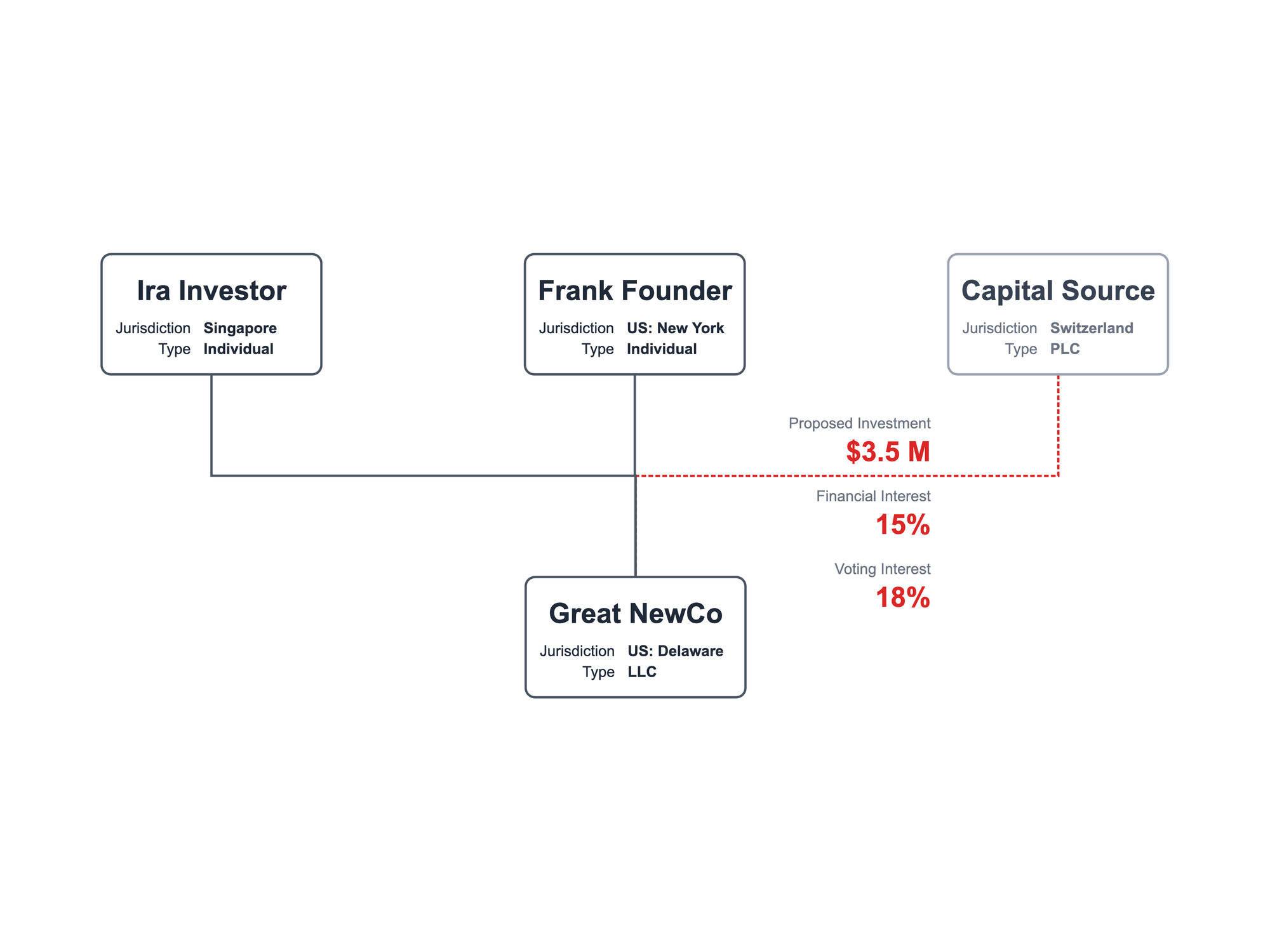Org Charts for Financial Analysts

Financial analysts use data to recommend decisions that improve business results. They play a crucial role in helping companies understand their financial performance and make strategic decisions to improve their profitability.
Financial analysts use two types of organizational charts: company structure charts and management org charts.
Management org charts show the hierarchy of management within an organization, including the roles and responsibilities of each position. Company structure charts show the ownership and legal structure of a company, including the relationships between different entities and subsidiaries.
Legal Org Charts for Financial Analysts
While management org charts primarily help with internal changes, legal org charts are often externally focused. For examples, legal entity org charts are used for corporate transactions, tax analysis, compliance and due diligence.
Org Charts for Mergers and Acquisitions (M&A)
Legal org charts are valuable tools for analysts involved in mergers and acquisitions (M&A).

By examining the company structure chart of a target company, analysts can identify potential risks and opportunities, such as regulatory compliance issues, tax implications, and financial liabilities. This information is crucial for conducting due diligence and assessing the financial impact of the M&A transaction on the acquiring company.
Org Charts for Tax Analysis
Legal organization charts help financial analysts understand the tax and financial implications of a company's ownership structure. Analysts can identify relationships between different entities and subsidiaries with the ownership stakes of key stakeholders. This information is essential for assessing a company's financial health and making strategic recommendations to improve profitability and efficiency.
Org Charts for Financial Reporting and Compliance
Financial analysts also use legal org charts to prepare financial reports and disclosures for investors and regulatory authorities.

Analysts can ensure that financial statements accurately reflect the ownership and legal structure of the company, with any related-party transactions or conflicts of interest. This accuracy is essential for maintaining transparency and compliance with accounting standards and regulations.
Org Charts for Due Diligence, KYC, and UBO
Legal org charts are essential for conducting due diligence, know-your-customer (KYC) checks, and identifying ultimate beneficial owners (UBOs) of a company. Financial analysts use these charts for corporate finance transactions, such as loans, investments, and partnerships, to verify the ownership and legal structure of the company and assess potential risks and opportunities.
Management Org Charts for Financial Analysts
Management org charts are invaluable for financial analysts to understand the reporting structure within an organization and identify key decision-makers. Analysts can determine who is responsible for financial decisions and who has the authority to approve budgets and investments.
Org Charts for Restructuring Models
When senior management considers a strategic restructuring, financial analysts can use org charts to model the potential changes.

Org Charts for Financial Planning and Analysis (FP&A)
Financial analysts use management org charts to identify key stakeholders involved in financial planning and analysis (FP&A) processes. By understanding the organizational hierarchy, analysts can determine who is responsible for what activities.
Org charts help analysts recommend organizational changes that will improve efficiency: an essential FP&A function.
Org Charts for Risk Management
Financial analysts use management org charts to assess and mitigate financial risks within an organization. Analysts can collaborate with with key stakeholders responsible for risk management and compliance. This cooperation is vital for providing recommendations to mitigate financial risks and ensure regulatory compliance.
Conclusion
Org charts are invaluable tools for financial analysts, providing a comprehensive understanding of an organization's management and ownership structure. By leveraging org charts, analysts can identify key decision-makers, understand the relationships between different entities, and offer insights and recommendations that help organizations achieve their financial goals.
These charts are made with Lexchart for automatic organization charts.

